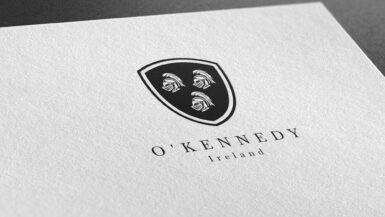The Bermingham family name, with its rich historical connotations, finds its earliest origins in Warwickshire, England. This surname’s initial emergence is closely tied to Peter de Bremingeham, who was recorded in the Pipe Rolls of Staffordshire in 1170. Over time, this family name evolved and became prominent in various regions, notably in Lincolnshire and Warwickshire, as evidenced by historical records from the 13th and 14th centuries.
Etymology and Meaning
The surname Bermingham is derived from the place name “Bermingeham,” which was first documented in the Domesday Book of 1086. The etymology suggests a linkage to geographical features or landmarks prevalent in the area during that period.
Earliest Known Usage
The first known usage of the Bermingham surname is attributed to Peter de Bremingeham, recorded in 1170 in Staffordshire. Subsequent notable mentions include Gilbert de Birmingeham in Lincolnshire (1271) and John de Burmyngham in Warwickshire (1333).
Geographic Distribution
The Bermingham family has a significant presence in Ireland, matching its density in England. This distribution highlights the family’s historical and cultural impact in both regions.
Original Geographic Location
Originally from Warwickshire, England, the Bermingham family’s presence expanded significantly across various counties in England before establishing strong roots in Ireland.
Migration Patterns
The Bermingham family’s migration to Ireland was pivotal, marked by their involvement in aiding Strongbow, Earl of Pembroke, during the conquest of Ireland. This movement led to a profound influence on Irish history and society.
Historical Context
Notable Historical Events
The Bermingham family played a critical role in several key historical events, notably in assisting Strongbow during the conquest of Ireland. Their involvement in significant battles and political developments shaped the course of both English and Irish history.
Involvement in Key Moments in History
Key figures from the Bermingham family, such as Sir John Bermingham, Earl of Louth, were instrumental in military and political arenas, particularly in the early 14th century.
Notable Irish Bearers of the Surname
Famous Individuals
- Sir John Bermingham, Earl of Louth: A pivotal figure in Irish history, known for his military leadership and political influence.
- Thomas de Bermingham: An Anglo-Norman knight who became Lord of Athenry in County Galway.
- Sir Richard Birmingham: A landowner and politician, who served as High Sheriff of County Mayo.
- Luke Birmingham: An Irish cricketer who represented the national team in the late 19th century.
- Joseph Bermingham: A revolutionary figure in the Easter Rising of 1916.
- John Bermingham, 1st Earl of Louth: A nobleman and soldier in the Williamite War in Ireland.
Influential Figures
The Bermingham family’s influence extended beyond military and political realms, impacting various facets of Irish society and culture.
Variations of the Surname
Spelling Variations
The Bermingham name has undergone various spelling changes over the centuries, reflecting the linguistic and cultural shifts in the regions where the family resided.
Regional Differences
The family name exhibits variations in spelling and pronunciation, influenced by regional dialects and linguistic evolutions in England and Ireland.
Current Statistics and Distribution
Frequency and Global Distribution
The Bermingham surname continues to be prevalent in Ireland and England, with a notable presence in other parts of the world due to migration and diaspora.
Changes Over Time
The distribution and frequency of the Bermingham name have evolved, reflecting historical migrations, social changes, and cultural influences.
Family Coat of Arms
The Bermingham family coat of arms is rich in symbolism, with each element representing different aspects of the family’s heritage and characteristics:
- Silver/White Color: Traditionally, this color in heraldry represents peace and sincerity. It signifies the family’s commitment to these virtues.
- Blue Color: Blue, or azure in heraldry, symbolizes loyalty and truth. This reflects the family’s steadfastness and integrity.
- Indented Line: An indented line often signifies fortifications or walls, symbolizing defensive strength and protection. It could represent the family’s role in safeguarding their domains.
- Arrows/Arrowheads: These are symbols of martial readiness and a warrior’s resolve. They denote the family’s history of military involvement and their readiness to defend their honor and lands.






Leave a reply